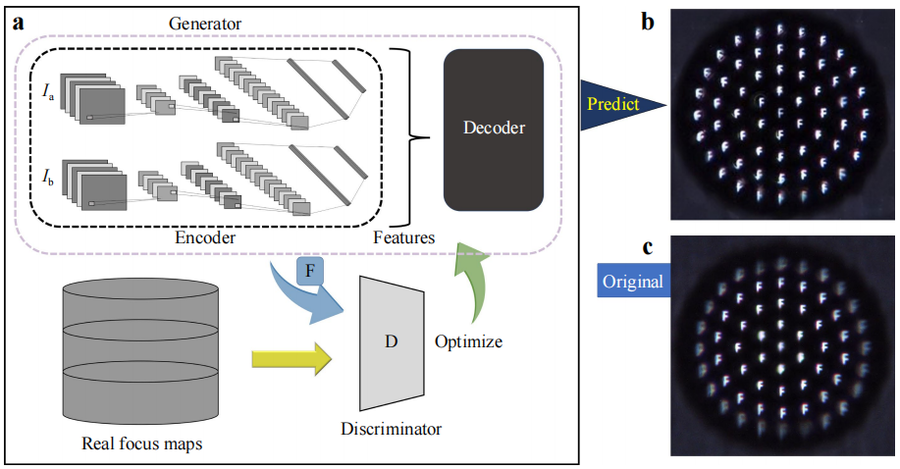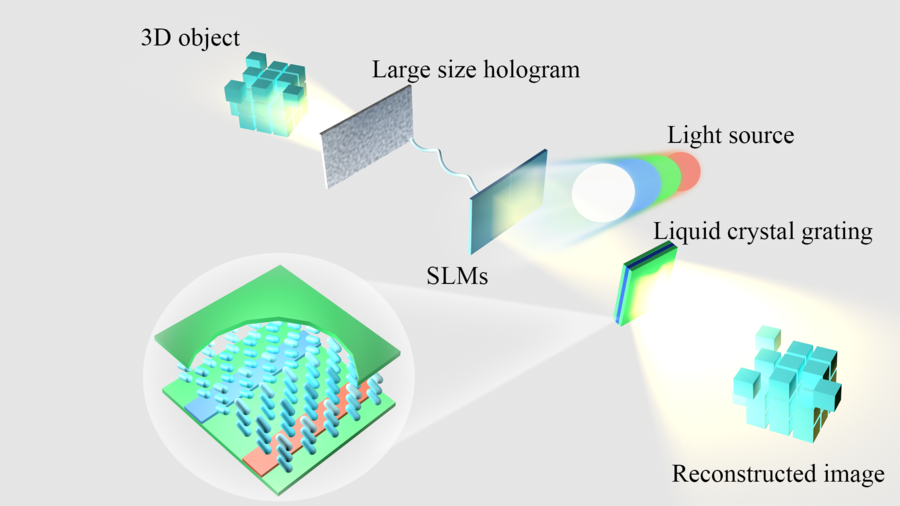Dragonfly eyes inspire new MLA processing technique
KNOXVILLE, TN, October 06, 2023 /24-7PressRelease/ — A new method has been developed for fabricating 3D compound eyes. The technique uses a 3D laser to ablate a curved surface, followed by etching in acid. This method can produce high-quality 3D concave lens arrays that can be used to make soft compound eyes. Image restoration using a deep learning algorithm can further improve image quality. This method is simple and efficient. It could be used to develop compound eyes for self-driving cars and other applications.
Industry 4.0 requires simple solutions for complex functions. Optical sensors, such as pinhole cameras, can deliver a depth of focus and reasonable resolution, but they suffer from low intensity for reliable and fast imaging. This requires a long exposure time, which sacrifices fast imaging capability and limits their real-world usage in self-driving cars.
In a new paper published in Light: Advanced Manufacturing, a team of scientists led by Professor Qi-Dai Chen from Jilin University have developed a new technique for manufacturing 3D microlens arrays (MLAs). The research team were inspired by a dragonfly’s compound eye. The compound eyes of a dragonfly are made up of thousands of tiny lenses that allow the insect to see a wide field of view.
MLAs are small functional features at micro-dimensions and easy to integrate. They have been widely applied as practical optical devices in parallel micro-fabrication, integrated optofluidics microchips, biomimetics, beam shaping, 3D imaging, and 3D displaying.
Numerous methods have been proposed for efficient MLA manufacturing, but most are inefficient and incapable of fabricating the 3D surfaces required for compound eyes. Alternatively, MLAs are mostly prototyped from soft materials and can be transformed from 2D patterns to 3D configurations through mechanical deformation.
Femtosecond laser-enhanced local wet etching (fs-LEWE) is a promising technique for fabricating micro concave lens arrays (MCLAs) on a large scale. This technique has several advantages, including high throughput, simplified steps, and the ability to fabricate MCLAs on both planar and nonplanar surfaces. However, there are still some challenges associated with fs-LEWE.
One challenge is that the fabrication efficiency is limited because the process is generally performed in a pulse-by-pulse manner. Another challenge is that the process can be complex and demanding for curved substrates, as the surface topology must be carefully programmed, and a high-accuracy 3D motion stage is required.
Parallel processing can significantly improve the efficiency of fs-LEWE, but 3D parallel fabrication inside bulky materials or on curved surfaces remains a challenge.
Researchers are working to overcome these challenges and make fs-LEWE a more efficient and versatile technique for fabricating MCLAs. This could lead to the development of new optical devices with improved performance and applications.
A new method has been developed for fabricating 3D MLAs. The technique uses a 3D laser to ablate a curved surface, followed by etching in acid. This method can produce high-quality 3D concave lens arrays that can be used to make soft compound eyes. Image restoration using a deep learning algorithm can further improve image quality.
Spatial light modulator (SLM) is a phase-only diffractive optics element that can modulate the phase of a laser beam into an arbitrary distribution. This makes it possible to create complex 3D patterns with high precision.
The research team’s new technique is called holographic fs-laser processing-assisted wet-etching technology. The first step in this process is to create a large single concave lens on a curved substrate. This is done by focusing a laser beam onto the substrate through an objective lens. The laser beam creates small pits in the substrate, gradually evolving into a spherical profile during wet etching. The next step is to use SLM to create a 3D distributed focal spot array. This array is focused on the substrate, creating a 3D array of seeds. The seeds are then etched into microlenses, which overlap to form a closely packed and curved MCLA.
The advantages of this method include its high precision, efficiency, and versatility. It can be used to fabricate complex 3D patterns with high fidelity, and it can be used on a variety of substrates. This method has the potential to revolutionize the fabrication of microscale optical devices.
References
DOI
10.37188/lam.2023.026
Original Source URL
https://doi.org/10.37188/lam.2023.026
Funding information
This research received funding from the National Key R & D Program of China; the National Natural Science Foundation of China; the Natural Science Foundation of Jilin Province; the Education Department of Jilin Province; Interdisciplinary Integration, and the Innovation Project of JLU.
Contact
Qi-Dai Chen
Jilin University, State Key Laboratory of Integrated Optoelectronics, College of Electronic Science and Engineering, Changchun, 130012, China, [email protected]
About Light: Advanced Manufacturing
Light: Advanced Manufacturing (LAM) is a new, highly selective, open-access, and free-of-charge international sister journal of the Nature Journal Light: Science & Applications. The journal aims to publish innovative research in all modern areas of preferred light-based manufacturing, including fundamental and applied research as well as industrial innovations.
Chuanlink Innovations, where revolutionary ideas meet their true potential. Our name, rooted in the essence of transmission and connection, reflects our commitment to fostering innovation and facilitating the journey of ideas from inception to realization.
Related Link:
http://chuanlink-innovations.com
—
For the original version of this press release, please visit 24-7PressRelease.com here










